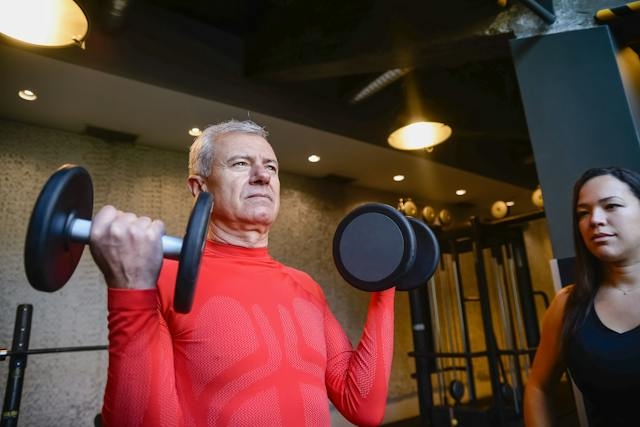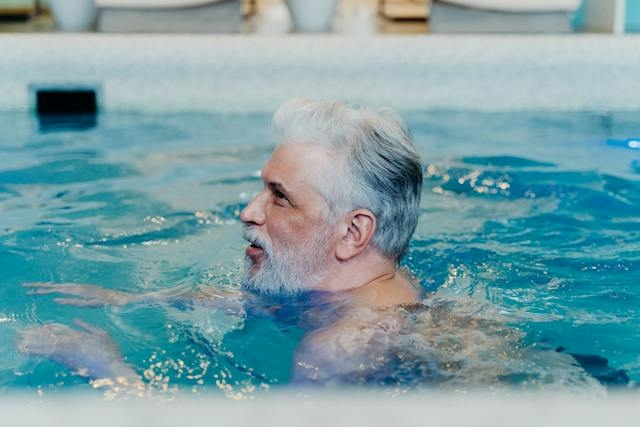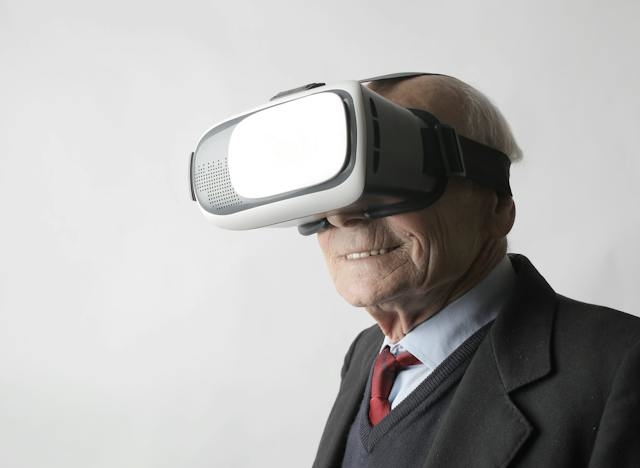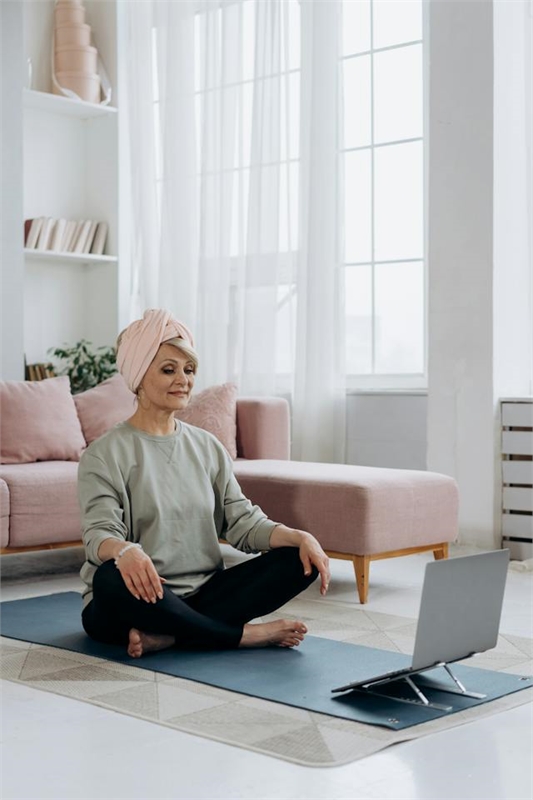If you or a loved one is a senior citizen, you know that aging can come with its share of health challenges. Geriatric physical therapy is a specialized branch of healthcare dedicated to helping older adults maintain and improve their physical function, mobility, and overall well-being. With the number of seniors in the United States rapidly growing, the need for effective geriatric physical therapy is more important than ever.
In this article, we will explore the latest advances in geriatric physical therapy and how they are set to improve the health and quality of life of the aging population, including how these innovative approaches can enhance mobility, prevent falls, and promote overall senior health in the year 2024.
Key Takeaways:
- The aging population in the United States is rapidly growing
- Geriatric physical therapy is a specialized branch of healthcare dedicated to improving physical function, mobility, and overall well-being in older adults
- The advancements in geriatric physical therapy hold great promise for improving senior health and quality of life in 2024
- Innovative approaches to senior rehabilitation can enhance mobility, prevent falls, and manage chronic pain
- Technological advancements and a holistic approach are shaping the future of geriatric physical therapy
Understanding the Growing Need for Geriatric Physical Therapy
As the aging population continues to increase, the demand for geriatric rehabilitation programs is rising, making it crucial to understand the unique challenges faced by elderly individuals. Aging can bring various physical and cognitive impairments, which can have significant negative effects on a person's overall well-being and quality of life.
To address these challenges, specialized geriatric physical therapy is required to enhance mobility, prevent falls, manage chronic pain, and improve strength and conditioning. Geriatric rehabilitation programs are designed to cater to the specific needs of older adults, focusing on providing personalized care that encompasses both physical and psychological aspects of senior health.
Geriatric physical therapy is essential for older adults, as it helps them maintain their independence and enjoy a better quality of life. By providing seniors with the tools and support they need to lead healthy and active lives, geriatric rehabilitation programs contribute to the broader goal of promoting successful aging.

Enhancing Mobility through Geriatric Physical Therapy
As people age, their ability to move freely and maintain a good range of motion can decline, leading to a decrease in functional abilities. Geriatric physical therapy can help address these mobility challenges by utilizing various techniques and interventions that can enhance seniors' ability to move independently with confidence and safety.
Therapeutic exercises are a common intervention in geriatric physical therapy that can help improve mobility. These exercises may include stretching, walking, agility training, and strength exercises targeting specific muscle groups. Range of motion training is another technique employed by therapists to promote joint flexibility and mobility range. By engaging in these techniques, seniors can maintain their mobility and independence, improving their overall quality of life.
Examples of Physical Therapy Techniques for Mobility Improvement:
Technique TypeDescriptionStretching & Range of Motion (ROM) ExercisesPerforming gentle stretches of various joints in the body to prevent stiffness and promote flexibility. Range of motion exercises help maintain joint movement and mobility.Resistance & Strength Training ExercisesStrength training and resistance exercises help improve bone density, balance, and coordination, which can prevent falls and injuries. Aerobic & Cardiovascular ExercisesAerobic and cardiovascular exercises increase heart rate and help improve cardiovascular health. Walking, cycling, and swimming are common exercises that are suitable for seniors.
Geriatric physical therapy is a structured and tailored rehabilitation program that aims to improve the overall well-being and function of older adults. By enhancing mobility through specialized interventions, seniors can maintain their independence and enjoy an improved quality of life.
Preventing Falls with Geriatric Physical Therapy
Falls are a major concern for seniors and can result in serious injuries that affect their quality of life. However, geriatric physical therapy is an effective approach to minimize the risk of falls and promote safety in daily activities.
Balance Training
With geriatric physical therapy, balance training is a key component in fall prevention. A therapist can customize exercises to the individual's needs, challenging them to improve their balance and stability. For instance, single-leg stands, lunges, and heel-to-toe walking can help seniors improve their overall sense of balance.
Gait Analysis
A therapist may conduct a gait analysis to help identify any potential problems with the individual's walking pattern. By watching how seniors walk, a therapist can address concerns, such as foot drop, limited range of motion, or other issues that could lead to falls.
Environmental Modifications
Modifications in the environment, such as adding grab bars in the bathroom or removing clutter, can reduce the risk of falls in seniors' daily lives.
“Geriatric physical therapy helps seniors maintain their independence and quality of life by providing a comprehensive fall prevention program customized to their individual needs," explains Dr. Sarah Lee, a geriatric physical therapist.
In conclusion, geriatric physical therapy provides effective fall prevention methods customized to the individual's unique needs. The combination of balance training, gait analysis, and environmental modifications can keep seniors safe from falls and enable them to live an active and fulfilling life.

Strengthening and Conditioning for Senior Health
As we age, maintaining muscle strength and endurance is crucial for maintaining a healthy and independent lifestyle. In geriatric physical therapy, strength exercises are a key part of rehabilitation programs, helping seniors preserve their physical function and reduce the risk of age-related declines.
Strength exercises involve resistance training, where muscles are worked against an opposing force, such as weights, bands, or body weight. These exercises help to increase muscle size and strength, improve bone density, and enhance joint stability and flexibility.
Some of the most common strength exercises in geriatric physical therapy include:
- Leg presses: This exercise strengthens the muscles of the lower body, including the quadriceps, hamstrings, and glutes.
- Bicep curls: This exercise targets the muscles of the upper arm and improves grip strength.
- Seated rows: This exercise strengthens the muscles of the upper back, helping to improve posture and reduce the risk of falls.
In addition to strength exercises, conditioning exercises are also an important part of senior rehabilitation. These exercises focus on building endurance and cardiovascular fitness, helping seniors to maintain their stamina and energy levels. Some examples of conditioning exercises include:
- Walking: This low-impact exercise is ideal for seniors, helping to improve heart health, increase circulation, and reduce the risk of chronic diseases.
- Aquatic exercises: Water-based exercises are gentle on the joints and provide resistance, making them an effective way to improve strength and endurance.
- Biking: Stationary or outdoor cycling is a low-impact way to improve cardiovascular fitness and build leg strength.

By incorporating strength and conditioning exercises into geriatric physical therapy programs, seniors can enhance their physical function and maintain their independence for longer. A skilled physical therapist can create a customized rehabilitation plan tailored to each individual's specific needs and goals.
Managing Chronic Pain in the Aging Population
Chronic pain is a frequent issue among older adults that can significantly affect their quality of life. Geriatric physical therapy focuses on pain management through various therapeutic interventions, modalities, and patient education to offer relief and improved function for seniors who experience chronic pain conditions.
Physical therapy plans often employ a multifaceted approach to chronic pain management that may include exercise prescriptions, manual therapies, modalities, and patient education. Goals are specific to the individual and aim to manage symptoms, promote functional mobility, and improve overall well-being.
Exercise, one of the primary interventions utilized in geriatric physical therapy, can be highly effective in managing chronic pain by promoting physical function, improving mood, and reducing stress levels. Physical therapists may design customized exercise programs and provide supervision to optimize benefits while adapting them according to individual needs.
Manual therapies are another common intervention frequently used in geriatric physical therapy to manage chronic pain. Various techniques, including joint mobilization, soft tissue mobilization, and massage, are commonly used to ease symptoms such as muscle tension and overall discomfort.
Modalities such as heat and ice applications, ultrasound, and electrical stimulation may be used in managing chronic pain in conjunction with other interventions. Patient education, including addressing misconceptions about pain, encouraging physical activity, and promoting a healthy lifestyle, is often an essential part of geriatric physical therapy programs.
Technological Innovations in Geriatric Physical Therapy
The field of geriatric physical therapy is advancing rapidly, with new and innovative technologies emerging that have the potential to transform how seniors receive rehabilitation services. These technological advancements are reshaping the landscape of geriatric physical therapy, creating new opportunities for elderly patients to engage with their therapists in more effective and meaningful ways.
Virtual Reality: One of the most exciting technological innovations in geriatric physical therapy is virtual reality (VR) technology. VR uses computer-generated 3D environments to provide seniors with immersive and interactive experiences that engage both their bodies and minds. VR has been shown to be especially effective in improving balance and gait in seniors, as well as reducing the risk of falls.

Benefits of Virtual Reality:
- Enhances motivation and engagement
- Provides a safe and controlled environment for rehabilitation
- Offers personalized exercises and challenges
Examples of Virtual Reality Devices:
- Samsung Gear VR
- Oculus Rift
- HTC Vive
Telehealth: Another emerging technology that is revolutionizing geriatric physical therapy is telehealth. Telehealth allows patients to connect with their therapists remotely through videoconferencing and other digital platforms. This approach offers seniors greater flexibility and convenience in their rehabilitation, enabling them to receive care from the comfort of their own homes and reducing travel time and expenses.
Wearable Devices: Wearable devices are another exciting technological advancement that is gaining popularity in geriatric physical therapy. These devices can be used to monitor a patient's progress and movements in real-time, allowing therapists to provide personalized feedback and adjust treatment plans accordingly. Wearables can also provide seniors with valuable data and insights into their health and physical performance, empowering them to take charge of their rehabilitation journey.
Incorporating these technological innovations into geriatric physical therapy programs has revolutionized the way seniors approach rehabilitation, offering a more engaging, accessible, and effective path to improved senior health.
Integrating Holistic Approaches into Geriatric Physical Therapy
Geriatric physical therapy is not just about treating the physical symptoms of aging; it also involves addressing the emotional, mental, and social aspects of the patient. Holistic approaches to physical therapy, such as mindfulness, nutrition, and complementary therapies, can help improve the overall well-being of older adults and enhance the effectiveness of their rehabilitation journey.
Mindfulness
Mindfulness practices such as meditation and breathing exercises can help seniors reduce stress, improve their focus and cognitive abilities, and foster a positive outlook on life. By integrating mindfulness techniques into their physical therapy sessions, seniors can learn how to manage their pain and anxiety and cope better with the challenges of aging.

Nutrition
Nutrition plays a crucial role in the health and well-being of seniors, and proper nutrition is essential for effective geriatric physical therapy. Physical therapists can work with seniors to create individualized nutrition plans that focus on maintaining a healthy weight, promoting bone health, and reducing inflammation, all critical components of senior health.
Complementary Therapies
Complementary therapies such as acupuncture, massage, and chiropractic care can help seniors manage their pain and improve their overall health and well-being. Physical therapists can collaborate with complementary therapy practitioners to create a customized treatment plan for individual seniors, addressing any specific health concerns or pain conditions.
By incorporating these holistic approaches into geriatric physical therapy programs, seniors can experience a more comprehensive and effective rehabilitation journey, leading to greater physical, emotional, and social well-being.
Conclusion
As the aging population continues to grow, the need for effective geriatric physical therapy is more important than ever. By focusing on innovative approaches to enhance mobility, prevent falls, and improve strength and conditioning, senior rehabilitation can have a significant impact on the overall health and quality of life of older adults.
Chronic pain management through therapeutic interventions, modalities, and patient education can also offer relief and improved function for seniors suffering from chronic pain conditions.
The integration of technological innovations such as virtual reality and telehealth can enhance accessibility, engagement, and outcomes. Meanwhile, incorporating holistic approaches like mindfulness, nutrition, and complementary therapies can enhance overall well-being and improve the effectiveness of rehabilitation.
Through all of these strategies and more, geriatric physical therapy can help the aging population lead healthier, more active lives. So if you or a loved one is a senior in need of rehabilitation, consider seeking out the expertise of a geriatric physical therapist and take advantage of the many benefits that this specialized field has to offer.
FAQ
What is geriatric physical therapy?
Geriatric physical therapy is a specialized branch of physical therapy that focuses on the unique needs and challenges faced by older adults. It aims to improve their functional abilities, enhance mobility, prevent falls, manage chronic pain, and promote overall senior health and well-being.
Why is geriatric physical therapy important for the aging population?
Geriatric physical therapy is crucial for the aging population because it addresses the specific physical and cognitive changes that occur with aging. It helps older adults maintain or regain their independence, improve their quality of life, and prevent or manage age-related conditions or injuries.
What techniques are used to enhance mobility through geriatric physical therapy?
Geriatric physical therapy uses a variety of techniques to enhance mobility in seniors, including therapeutic exercises, range of motion training, balance training, gait analysis, and assistive devices. These interventions aim to improve strength, flexibility, coordination, and overall functional abilities.
How can geriatric physical therapy help prevent falls?
Geriatric physical therapy plays a crucial role in fall prevention by focusing on balance training, gait analysis, and environmental modifications. By improving muscle strength, coordination, and overall balance, it reduces the risk of falls and promotes safety in daily activities for older adults.
What are the benefits of strength and conditioning exercises in geriatric physical therapy?
Strength and conditioning exercises in geriatric physical therapy help seniors maintain and improve their muscle strength, endurance, and overall physical fitness. These exercises not only enhance mobility and functional abilities but also prevent the risk of falls and promote a healthier and more active lifestyle.
How does geriatric physical therapy address chronic pain in the aging population?
Geriatric physical therapy employs various therapeutic interventions, modalities, and patient education to manage chronic pain in the aging population. It aims to reduce pain levels, improve function, and enhance the overall well-being of older adults suffering from conditions such as arthritis, fibromyalgia, or degenerative disc disease.
What technological innovations are being integrated into geriatric physical therapy?
Geriatric physical therapy is incorporating technological innovations such as virtual reality and telehealth. These tools provide more accessible and engaging rehabilitation experiences for seniors, increasing their participation and improving outcomes in their rehabilitation journey.
How do holistic approaches enhance geriatric physical therapy?
Holistic approaches, including mindfulness, nutrition, and complementary therapies, can enhance geriatric physical therapy by addressing the well-being of older adults on multiple levels. Incorporating these integrative practices promotes the overall health and vitality of seniors and optimizes the effectiveness of their rehabilitation process.